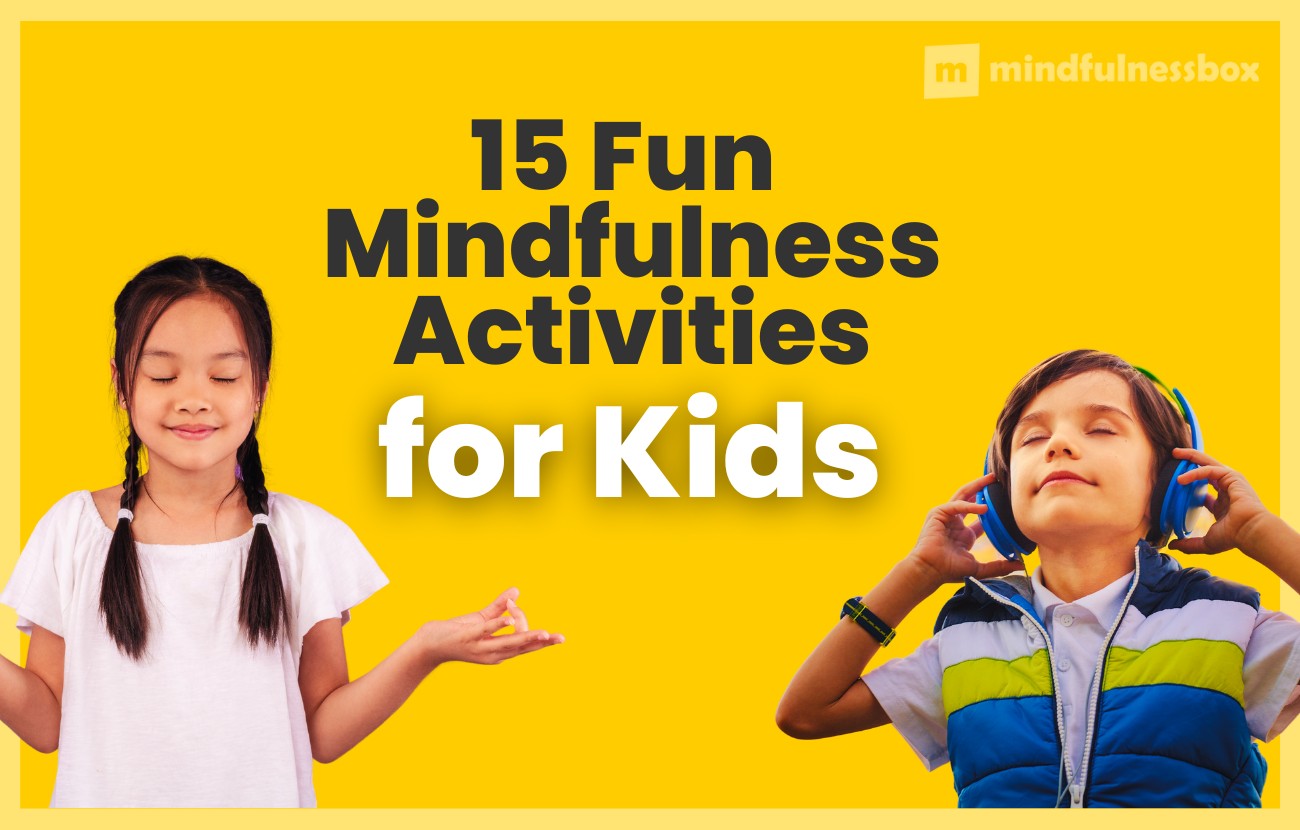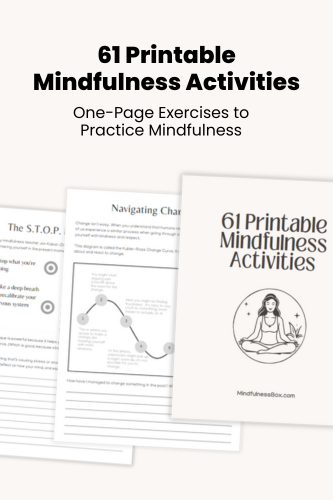The best mindfulness exercises for kids are interactive mindfulness activities. Fortunately, from pebble meditations to the raisin exercise to mindfulness books for children, there’s a wealth of options to help kids learn about mindfulness.
If you’ve ever seen a child try and sit still on a meditation pillow – or anywhere – you understand what a challenge teaching mindfulness skills to kids can be. The techniques that work for adults aren’t necessarily ideal for children.
The best way to help kids understand the principles behind mindfulness is to move away from abstract exercises and towards sensory experiences.
Get dozens of one-page exercises to help practice mindfulness, meditation, gratitude, and self love. Perfect for printable handouts when teaching mindfulness to groups, students, or in the workplace.
To see examples, plus a full list of the 61 exercises included, click below.
For example, asking children to notice their five senses as they eat a snack can be an easier place to start than breathing meditation.
As kids get comfortable with sensory mindfulness exercises, they can be slowly introduced to more advanced mindfulness techniques for children, like meditation. Once you move into meditation, using guided meditations is a good way to minimize boredom and make sure kids have the right amount of stimulation.
Looking for mindfulness activities for other age groups? Check out our articles on mindfulness activities for adults and mindfulness activities for teens.
Below, we’ve created a list of 15 mindfulness exercises for children that focus on fun, sensory experiences that engage kids rather than bore them.
15 mindfulness activities for children
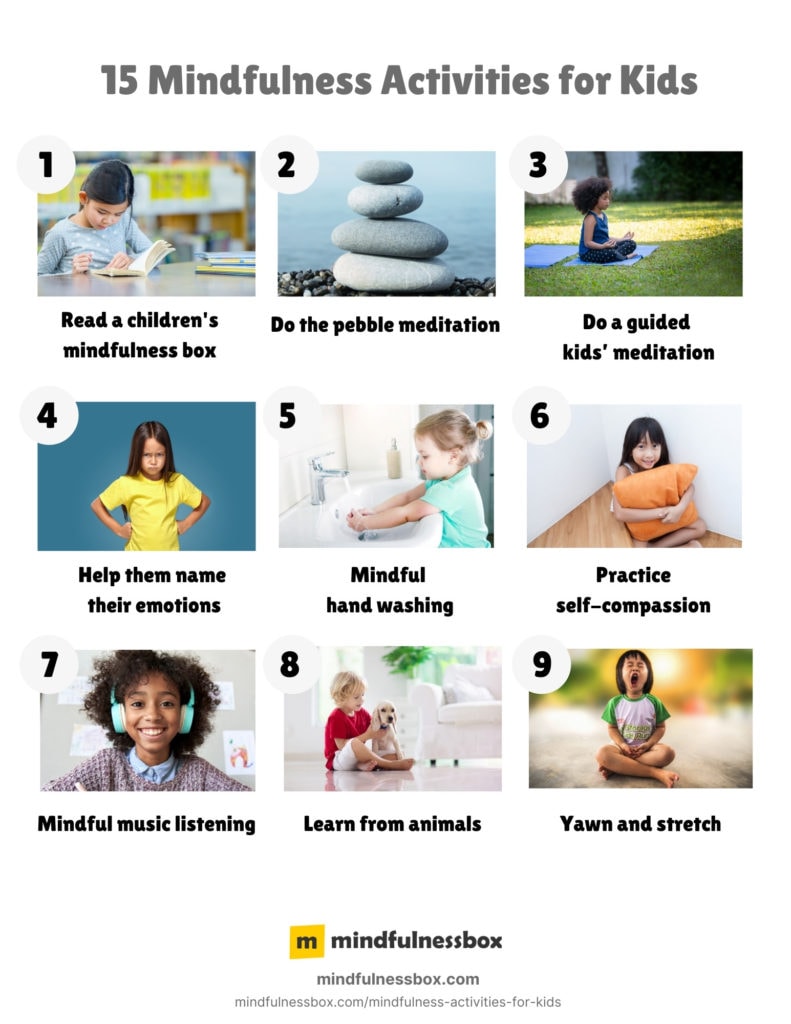
1. Read a children’s mindfulness book
Here are a few of the best mindfulness books for children, with some lessons that are shared. You might consider incorporating a “mindfulness reading time” into your children’s mindfulness activities.
- Breathe With Me by Mariam Gates: Explains to kids that breathing is their superpower, and it’s with them anytime they’re mad or worried. This works well as an entry-level meditation exercise for kids.
- Cassidy’s Present by Sue Mateer: While it’s easy for humans to get distracted by the future or worried, that’s not how it works for animals. Cassidy’s Present explains what we can learn from dogs.
- I Am Peace by Susan Verde: Susan Verde’s book aims to help kids understand managing their emotions and living with wonder and imagination in the present moment.
2. Do the pebble meditation
Mindfulness games for kids work better than explaining abstract concepts.
The pebble meditation is a good interactive place to start. The pebble meditation was created by monk and famed meditation teacher Thich Nhat Hanh as a way to help children learn about mindfulness. It helps to internalize the message that everything we need is already inside of us.
Thich Nhat Hanh developed a children’s book to accompany this exercise called A Handful of Quiet.
To do the pebble meditation, gather four pebbles for each child. Place the pebbles in front of each child.
- Pick up the first pebble. Have each kid do so too. Then, show a photo of a flower, or ask the kids to imagine a flower and describe what a flower means to them. Tell them that, for this pebble, the flower represents beauty and love.
- Pick up the second pebble. Show a photo of a mountain. Ask the kids to imagine a mountain, and describe what it represents. Tell them that their mountain pebble represents strength and bravery.
- Pick up the third pebble. Show a photo of water. Ask the kids to imagine a still, calm lake. Tell them that their water pebble represents calm and stillness.
- Pick up the fourth pebble. Show a photo of the sky. Ask the kids to imagine what it feels like to look up at the wide, open sky. Tell them that their sky pebble represents freedom and happiness.
Once the exercise is done, explain that each of the pebbles is theirs to keep forever. And that each pebble represents a quality that they hold inside of them, and can access whenever they need, forever: love, strength, calm, and happiness.

(You can find A Handful of Quiet on Amazon here)
3. Do a guided kids’ meditation
Keeping kids’ attention during a meditation session can be hard. They’re wired to be fidgety. It’s hard to hold your attention on something when you’re young.
That’s where guided meditation activities for kids can come in handy.
Insight Timer has a good free selection of guided meditations for kids.
Breathe With Me, the children’s book mentioned in the section above, helps kids learn the basics of breath-focused meditation.
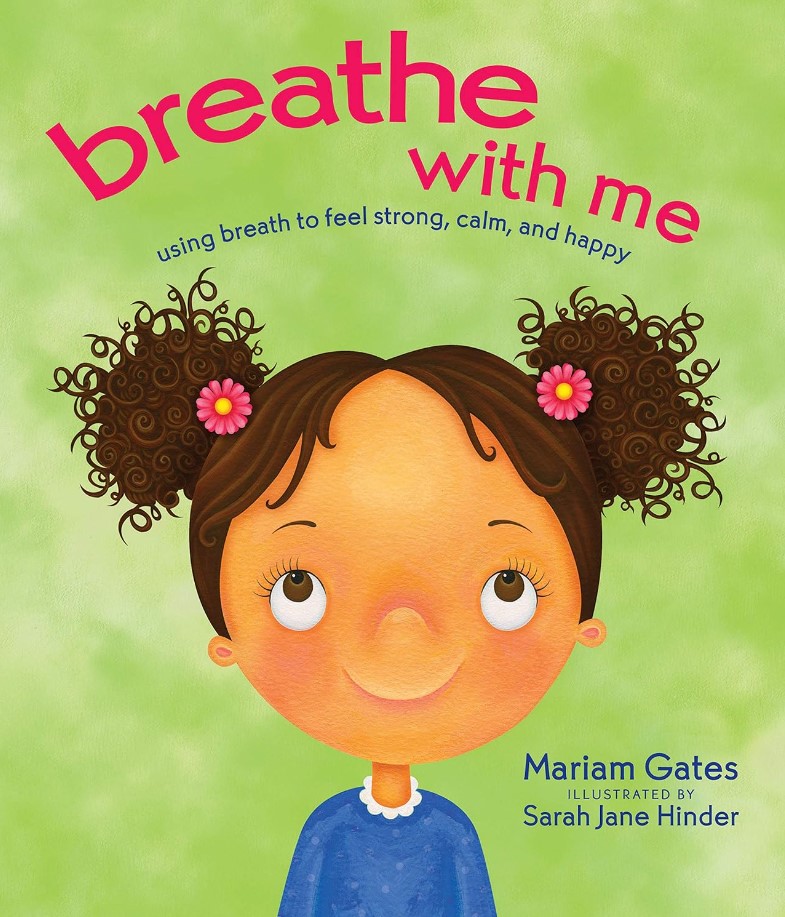
(You can find Breathe With Me on Amazon here)
4. Help them name their emotions
It’s hard for all of us humans to deal with our emotions, and it can be even tougher for kids, who often don’t have the vocabulary, awareness, or context to understand what they’re feeling and why.
Learning to identify emotions early in life can be a superpower that pays dividends for decades in relationships, friendships, and kids’ relationships with themselves.
There are eight primary emotions: joy, fear, sadness, anger, interest, disgust, surprise, and shame.
For entry-level kids mindfulness activities, it’s probably best to stick to the simplified Emotional Color Wheel, which covers the four basics: happy, sad, anxious/upset, and angry.
An easy way to talk about these four emotions is to map them to a color. When a child seems upset, ask “what color are you feeling right now?” They can answer with a color (“I feel yellow”) as a way to quickly acknowledge their feelings without having to find the words to verbalize exactly what’s wrong.
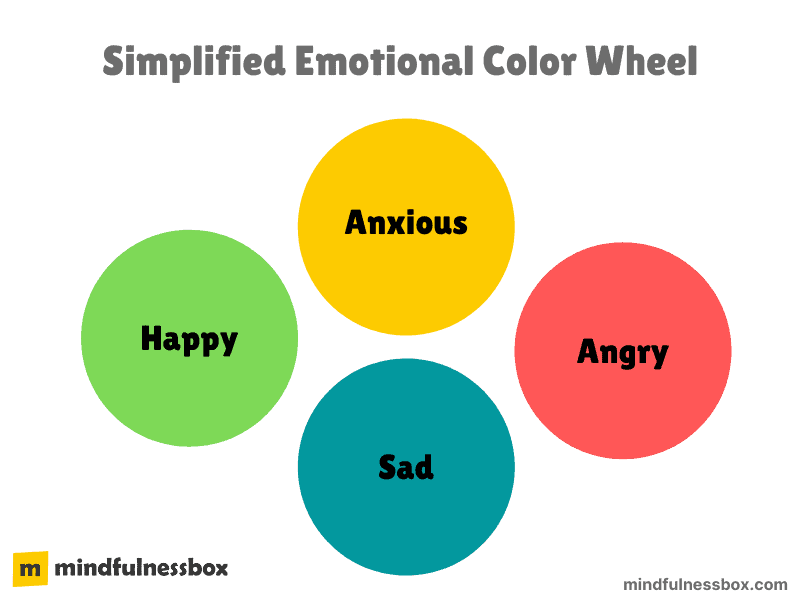
5. Mindful hand washing
Teaching kids to wash their hands mindfully is one of the most intuitive mindfulness activities for children:
- It’s something they do many times a day
- There are sounds and sensations to focus on
- Washing hands is an activity you want to encourage kids to do anyway
To wash your hands mindfully, just have your kids do the same thing they normally do – but slower. Pay attention to each step of the process. Ask them to notice the feeling of the lathered soap on your hands, and the temperature of the water. Invite them to see how it feels when they turn the temperature of the water to cold, versus warm.

6. Practice self-compassion
Self-compassion is an essential skill for operating in the world, because so many of us walk around being hard on ourselves.
This is true for kids, too, who often blame themselves for things that aren’t their fault. When they do make mistakes, they may be too slow to offer themselves compassion and forgive themselves.
Instead, we need to help kids understand that mistakes are part of life, and that we need to treat ourselves with patience, understanding, forgiveness, and compassion.
A good way to approach this with kids is to ask them what they’d do if their sibling or best friend was sad. Wouldn’t they hug them and tell them, “It’s okay” – even if they’d made a mistake?
Tell them this is exactly the attitude they can treat themselves with.
7. Mindful music listening
Your kids probably already have a favorite song.
Ask them to listen to it once as they normally do. Then, ask them to listen a second time, this time paying attention to every part of the song: the words, the instruments, the loud sounds, and the quiet sounds.
Did they notice anything different the second time? How does it feel when they pay close attention to the music?
8. Learn from animals
That’s right – when it comes to mindfulness, Fido is one of the foremost experts out there.
Humans are all about striving, while animals easily achieve that present-moment awareness we’re after.
Animals are a great way to help kids notice playfulness, presentness, and lack of worry. You can contrast the way a dog moves through the world with a comical, exaggerated version of the way you move through the world on a bad or tired day.
Tell them that dogs and animals can be our teachers. Here’s a children’s book that drives this point home.
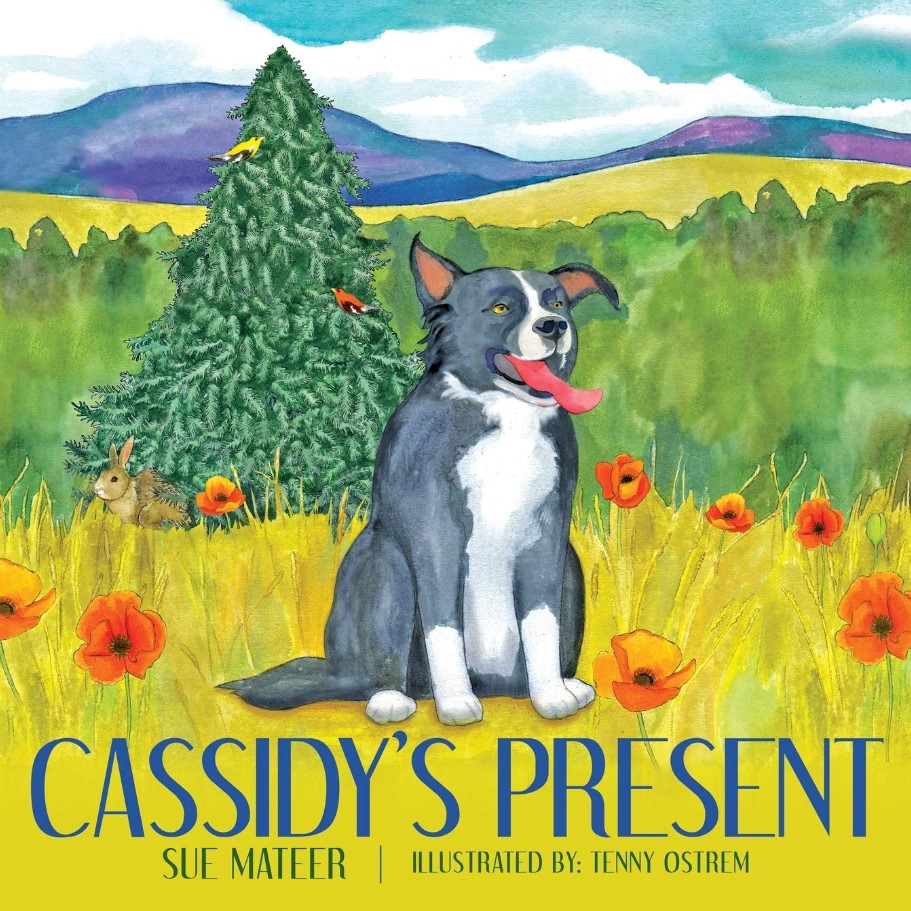
(You can find Cassidy’s Present on Amazon here)
9. Yawn and stretch
Who doesn’t appreciate an opportunity to yawn and stretch?
Especially if you’re designing a mindfulness activity that takes place in the morning, there’s no better icebreaker than to give everyone a chance to do what they really want to do:
Acknowledge that they’re tired!
But yawning and stretching slowly is also a mindfulness exercise in its own right. It can bring you back to your body, and help you notice and release areas of tension.
Start your mindfulness session by inviting kids to yawn, stretch, and loosen up.
10. Go barefoot
Add this to your list of mindfulness activities for students on the younger end:
A great way to shake kids out of their normal routine, and encourage a new way of looking at the world, is to have them go barefoot.
First of all, going barefoot is just plain fun. When everyone takes their shoes off and starts moving around, it brings a new kind of energy into the room.
But more importantly, intentionally observing the world while barefoot can be a great mindfulness activity. Walking barefoot lets kids focus on sensations you normally wouldn’t notice.
To get started, have participants take their socks and shoes off and walk around on the carpet or floor. What feelings do they notice? Is there any other surface they can step on? How does it compare? Have them wiggle their toes, move their feet, and really feel the surface of the ground as they slowly pay attention to the experience of walking in a deeper way than before. How does it compare with the experience of walking with their shoes on, or with their socks?
This activity pairs well with walking meditation, too.
11. Walking meditation for kids
Because walking meditation is active, it can be a better fit for kids than seated meditation.
However, even slow walking and observation, as adults would do with walking meditation, can quickly get repetitive for kids.
Try making walking meditation a bit more dynamic and playful by encouraging kids to walk in different ways: on their heels, for example, or on their toes. After this introduction, depending on how they receive it, you can ease them into regular mindful walking.
12. Create a sensory experience
A great way to connect with kids on mindfulness is to stick to the senses.
Thoughts are abstract, and some kids find it quickly boring to pay attention to their breath. That’s why engineering activities based around sight, sound, touch, taste, and smell can be perfect for kids. They get a chance to linger on present-moment experiences while being encouraged to reflect on them afterwards.
Use Play-Doh, food, or other interactive items and ask the kids to name what they observe on each of the senses. (Just make sure you aren’t encouraging them to taste things that aren’t edible!).
The raisin exercise, below, is a classic example.
Sensory experiences are one of the best mindfulness activities for kindergarten students.
13. Do the raisin exercise
The raisin exercise is a classic practice that teaches you to linger on food, noticing the texture, taste, and smell on a deeper level than you normally would.
It doesn’t have to be done with a raisin, either. Pick your favorite food, or even a cup of tea, and approach it with intention, slowly.
It’s perfect for kids because of the high level of interactivity involved.
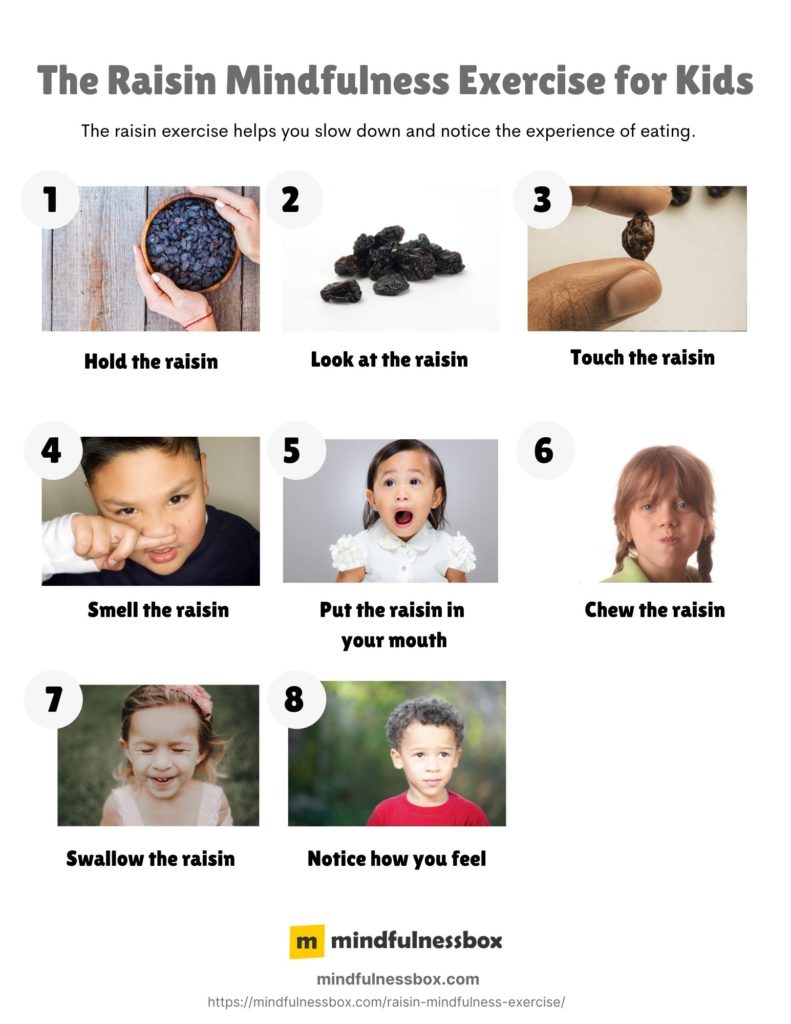
14. Try alternate nostril breathing
While breathing meditation can be hard for kids to focus on, here’s a version that’s a little less abstract:
Alternate nostril breathing.
Alternate nostril breathing provides a great structure to help kids manage your breath, while regulating the nervous system and promoting relaxation. Plus, it’s fun and playful.
To get started, just place your thumb on your right nostril. Then, breathe slowly through the left nostril. Switch to the other nostril, and repeat the process 3-4 more times.
15. Practice yoga
Kids have trouble sitting still.
Fortunately, you don’t have to sit still on a cushion in order to meditate.
Apart from walking meditation, there are other forms of movement meditation, like yoga or tai chi, that can be easily adapted for kids.
Yoga is probably the easiest place to start. Pick a few poses, starting with the simplest, and let kids have fun with the movement, balancing, and general challenge of holding yoga poses.
Download a printable PDF of these 15 mindfulness activities for kids
Just click the button below:

My mindfulness practice kicked off in 2016 with a ten-day silent retreat. Since then, I’ve read dozens of books about mindfulness and completed hundreds of hours of meditation. Thinking about what makes humans happy, calm, and peaceful is endlessly fascinating to me.

